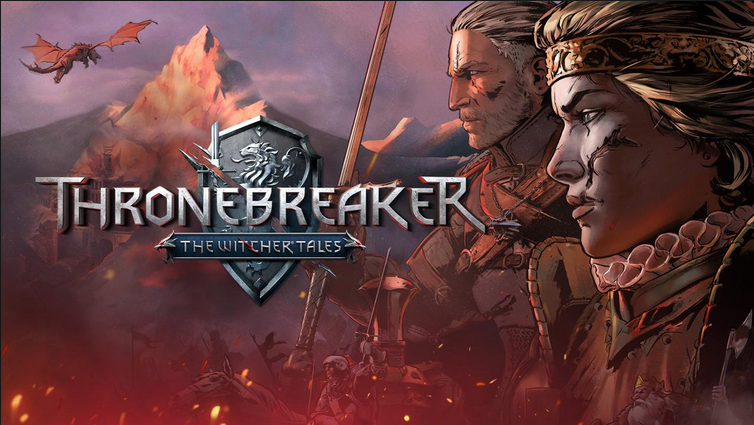Thronebreaker Game Review
January 17, 2019
After the stunning production of “The Witcher 3” in 2015, “CD Project Red” rolled out a game to its eager fans, and fellow fantasy enthusiasts to revel over. “Thronebreaker” is a game like no other, thought-provoking and immersive. The universe of “The Witcher” and “Thronebreaker” are interconnected.
“Thronebreaker” takes place between the fourth and fifth Witcher books, “The Tower of Swallows,” and “The Lady of The Lake.” “Thronebreaker” released on PC on October 23 and will be released on Play Station 4 and Xbox One on December 4.
When one is playing “Thronebreaker,” they play as Maeve, the queen of Lyria. Maeve unites the Northern Realms against the invading Nilfaardian forces the modern equivalent of the ancient Roman Empire; who conquered whoever stood in their path.
As Maeve, one builds and upgrades a vast army; attempting to produce numerous allies, while keeping in mind that everyone you meet could be a Nilfgaardian spy trying to stab Maeve in the back.
Nilfgaard spies may have infiltrated Maeve’s ranks. Much of “Thronebreaker” is built on the type of person the player wants Maeve to become. Who the player chooses to break bread with, or what enemies the player generates could have Nilfgaard spies within the player’s camp, and Maeve dragged to a nearby tree with a coil of rope.
Forging the correct alliances at the proper moments are crucial to conclude Maeve’s ambitious campaign against the massive Nilfgaardian force.
The player forges alliances with neighboring Northern realms, who all bear hate for the Nilfgaards, seeking revenge for lands lost due to the growing threat of Nilfgaard. To defeat the invading Nilfgaardian forces, the player will need to amass a considerable army.
As one progresses and explores the world of “Thronebreaker,” Maeve’s army increases in size: rising from recruited, unruly peasants, to disciplined peacekeepers. Warcamps are the center of the player’s operation, where one can bolster, and improve their army; not to mention war camps can also boost the troop’s strength in battle.
Decision making is critical, what type of commander is breed from the tense conflict will create a legend in the Northern Realms, or a failed uprising against the Nilfgaards.
The gameplay in “Thronebreaker” is unique, inevitably drawing many fans from the Witcher series, and of course, gamers who enjoy the unique gameplay. When Maeve is roaming the world on the player’s own free will, the game is a 2D top-down isometric.
The battles in “Thronebreaker” are like Gwent, a card game that is integrated into the “Witcher 3”. Gwent can be somewhat related to a watered down version of “Magic the Gathering,” the most popular trading card game worldwide. One builds their army with different cards, each card sporting different abilities, with varying power levels. One can shape their army depending on an ideal strategy whether using ambush like guerrilla warfare, minimalizing Maeve’s troops’ casualties, while harassing the Nilfaardians vast army, or meeting the Nilfgaards right in the face on an open field, raising morale under the correct leadership and unfortunately taking many casualties. The growing of one’s army is a satisfying experience that many will relish in the long run.
“Thronebreaker” is an exceptional game Witcher fans, and fantasy enthusiasts alike will enjoy exploring. Whether kicking back and relaxing: enjoying a good set of fantasy while being immersing oneself in an alien world, commanding an army, making important political decisions, “Thronebreaker” is genuinely a distinct game. The gruesome, utter detail of a fantasy atmosphere with a thick medieval feeling is what is going to get many people into playing and enjoying “Thronebreaker”.




































